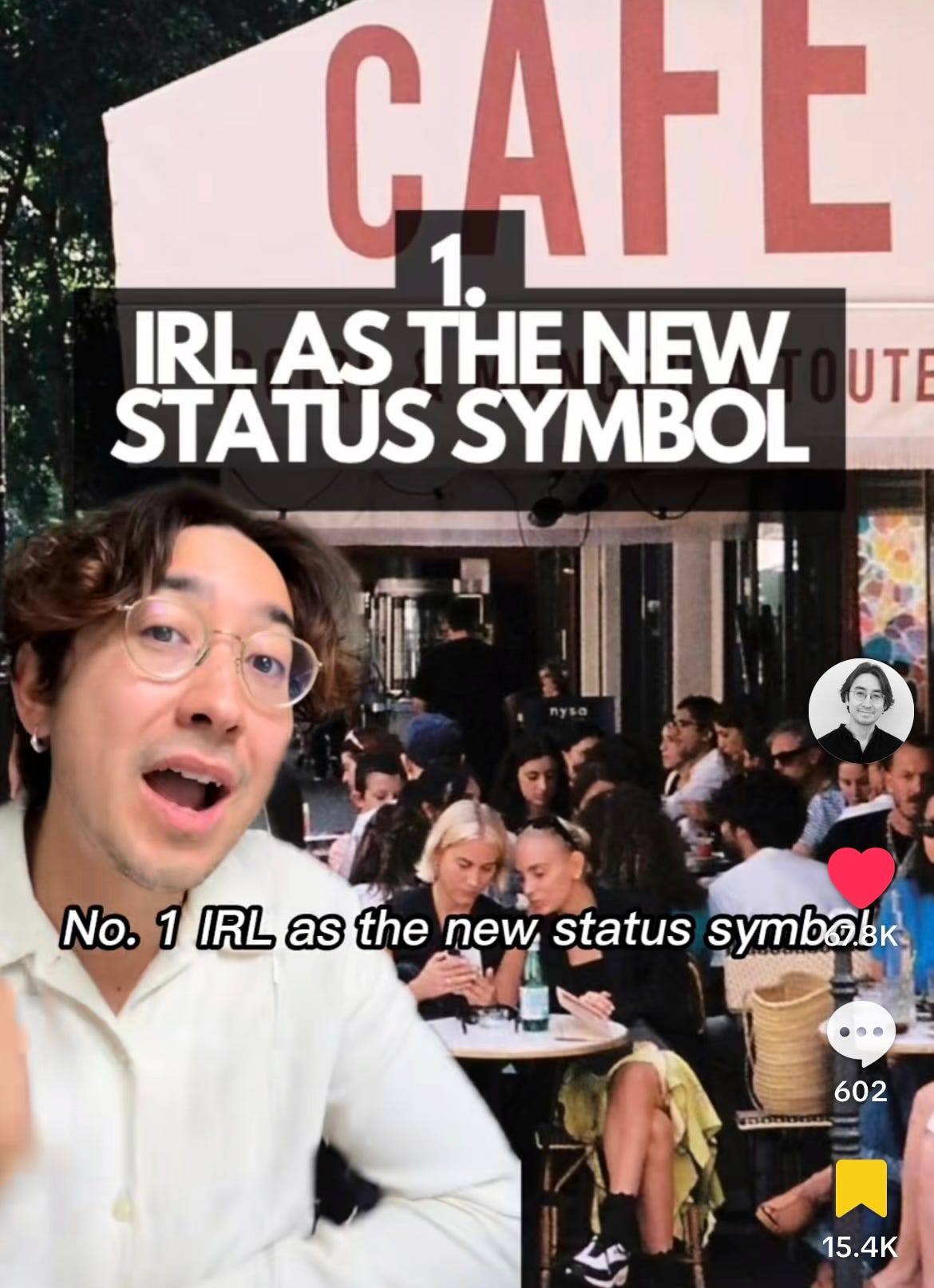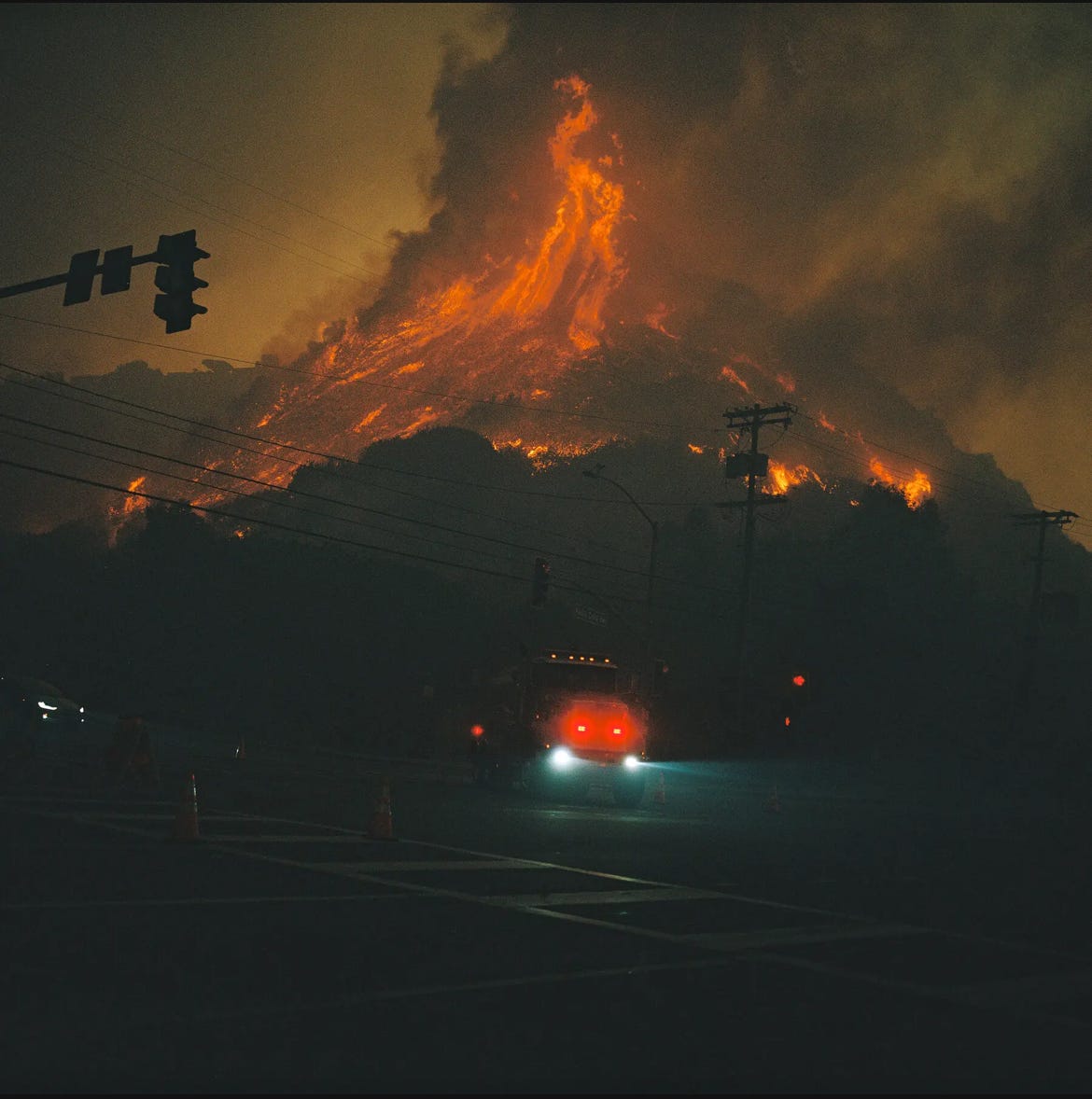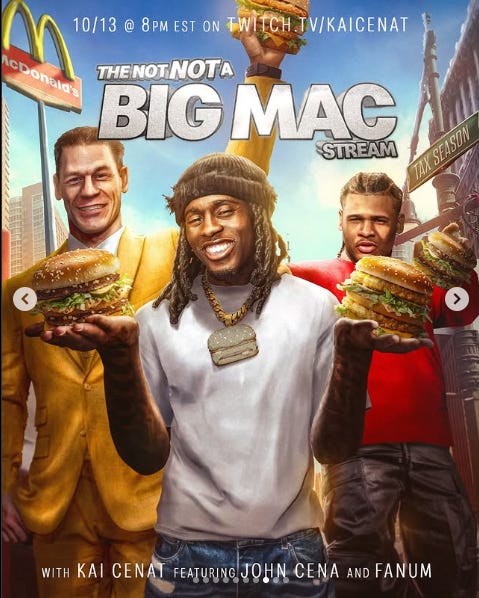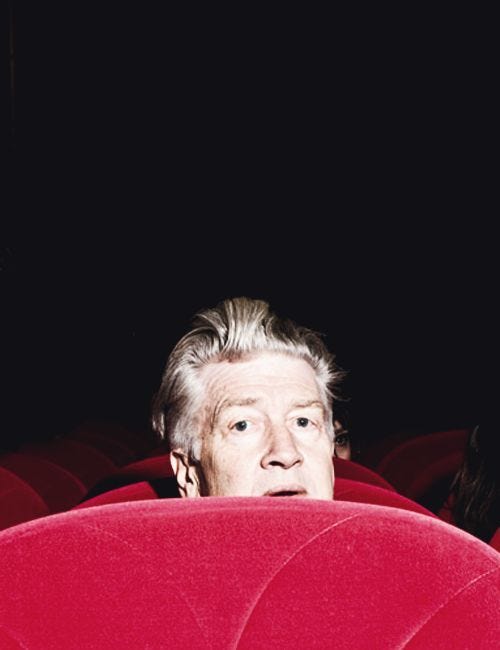Fragmented media & fragmented trust
Plus thoughts on the stories of the week and brand trends I'm watching | Vol. 56
Hi Move Fast, Think Slow Readers - Welcome to vol. 56. If you’re new here, you can learn more about the MF/TS Newsletter, but if you aren’t new here and dig our chili, then share this with a friend! 🤗
In last week’s dispatch, we shared two fascinating perspectives.
One perspective focused on the cultural tensions between the Elites and Down movements. The other perspective was on the acknowledgment of living in a “collapse-aware” space, acknowledging the duality of living in both the “here” and “there” of this slow, intensifying shift towards a new/different era.
Both these pieces have their fingers on the pulse of what is happening in our culture today. It can be both clarifying and helpful to your journey to get a sense of where we are actually at and what that implies for what is ahead.
In this week’s MF/TS dispatch, we will dive into the media & cultural implications of this “Elites vs. Downs” landscape for storytellers, marketers, and the like, but first, let’s talk about some of the bigger stories of the week.
1. End of an era: TikTok Going Away?
In a few days, TikTok will cease to exist in America….for now. What an interesting turn events. As someone who has used social sites for many years, I can confidently say TikTok has taken the entire concept of “social media” concept to an entire different space.
It’s not just social media and it’s not just like YouTube. It’s a strange convergence of both. And a home shopping network. And what was once MTV. And so on and so forth. I wrote about TikTok’s rise to prominence and its plethora of superpowers three years ago. It has become a juggernaut for good reason.
And here’s the thing about TikTok, people have build real communities on it, has sparked and supported social movements, I know someone who launched their comedy career off of it, someone started and sustained art projects to support people. There are so many stories of people using the app and having real life impact for them.
That means this app is IN the culture, and it’s EXPRESSING the culture. And that is huge.
And now it’s going away.
So, it’s a buzzkill.
But that being said, I understand America’s posture. How can we let TikTok dominate when China doesn’t let Meta or Google do business in China? Noah Smith wrote a fascinating analysis of what the ban means broadly speaking in geopolitical terms.
What’s next?
I think it’ll be interesting to see how Meta wins points on the stock market but I have doubts it will get a lot of users to come back, especially Gen-Z users. They’re going to go to Snapchat before they go to Instagram. The Reels product on Instagram is not an answer to TikTok. I do think YouTube (and potentially others) will gain more from TikTok going dark than Meta will when the dust settles. But also, I think TikTok could be back in the long term. We will see.
2. Are we entering the Post-Social Era?
Speaking of learning and TikTok, a real smart brand / cultural strategy consultant (Eugene Healy/Considered Chaos). He has amazing takes on cultural trends and their implications for storytellers and brands.
His recent hot take on the potential why he thinks we’re entering the “post-brainrot era” is strong. Here they are.
IRL is the new status symbol
2024 saw clubs pop up of all kinds (running, book clubs, pop-ups, and activations)
Eugene thinks being seen as IRL is a status symbol
I think people are burned out from their phones, computers, and screens in general and will be seeking out human connection more
AI Slop & Algo-Failure
The flattening of culture + plethora of “AI slop” coming to the feed
The flattening of culture has created the age of average (shout out to Alex Murrell where everything looks/feels/sounds the same out there (online and IRL). And it sucks.
And AI will continue to make weird AF content, and Eugene predicts the algorithms won’t be able to manage all of the “AI slop”
Will this all mean social media continues to die - will social media go the same way Malls have gone in America? They just might.
Short-Form Burnout and Brand As Media
As people consumer more short-form content, their appetites for more long-form content has and will continue to grow
Eugene hypothesizes that “hook ick” is real (the videos that are optimized to “best practices” to get us all to watch the full video but don’t really tell us anything) and therefore people want to go deeper.
There is a prediction that brands will bring more storytellers, makers, writers, producers in house to make longer-form content but I think the jury is still out because corporations aren’t exactly places that are known to believe in and curate culture driving narrative.
That said, I do agree with Eugene this is a HUGE opportunity space for brands. How some of the larger financial institutions don’t have their own mini-studios is beyond me.
“I had a video of me on Instagram the other day that had 2M views of me talking but this doesn’t get me any readers. You can’t engage with this. I cannot engage with people in a short-form distraction culture. But you can engage with longer-form, higher value storytelling and people are hungry for it.” - Ted Gioia with Dave Perell
3. These LA Fires Hurt
I can’t believe LA is still going through it, and it’s been such a heartbreaking thing to see. So many people’s homes are gone in a puff of smoke. And then they have to deal with the aftermath of it all. I cannot imagine. And what can any of us say or do about it?!
But of course, the humanity is always there. Humanity is beaming from every corner around and outside Los Angeles. Angelenos are good like that, and I know they’ll band together to get through to the other side of whatever this is.
An old friend wrote about what it’s like to be out there right now supporting the folks going through it, and I felt like it summed up the helplessness but also the need for human support perfectly:
I didn’t say much in that group setting. I had the feeling that whatever I might say wouldn’t be enough. But as we wrapped up, so many of them simply said they were happy that I came to support them. I felt, and still feel, inadequate to the need. But I showed up. I made it clear that I wanted to talk with them — to be there in person, though it was hard, and even though I didn’t know what they wanted. And that was enough.
The feeling of being inadequate to the need rang true. Much of my day-to-day job is communicating with people in Los Angeles. In the past week I’ve had to do work calls with folks in SoCal, and truth be told, it felt kind of gross. CAPITALISM MUST MARCH ON, but does it have to when folks are going through trauma on a daily basis? This strange new HyperNormalistaion era strikes again. 🙄🤦♂️
Nevertheless, give Alec’s piece a read to get an insider’s perspective. And better yet, donate to the families who need the most support in LA right now.
What the “Ups vs. Downs?” means for Media/Marketing Strategy & Ideas in 2025
Last week, I shared a summary of Ted Gioia’s insightful analysis of what is happening within the cultural tension of the ups (Elites) versus downs (lower classes) and how that plays out throughout politics and social movements. Ted Gioia cited this in 2014 and was inspired by a book written in 1929.
Ortega’s brilliant insight came in understanding that the battle between ‘up’ and ‘down’ could be as important in spurring social and cultural change as the conflict between ‘left’ and ‘right’. This is not an economic distinction in Ortega’s mind. The new conflict, he insists, is not between “hierarchically superior and inferior classes…. upper classes or lower classes.” A millionaire could be a member of the masses, according to Ortega’s surprising schema. And a pauper might represent the elite.
In today’s world, the UPS/ELITES are wealthy CEOs, DC politicians, celebrity TV newscasters, law enforcement authorities, experts of all stripes, Ivy League academics, hedge fund managers, tech titans at huge Silicon Valley companies, movie stars, etc.)
And here’s the big takeaway
The key driver of change, as Ortega sees it, comes from a shocking attitude characteristic of the modern age—or, at least, Ortega was shocked. Put simply, the masses hate experts. If forced to choose between the advice of the learned and the vague impressions of other people just like themselves, the masses invariably turn to the latter. The upper elites still try to pronounce judgments and lead, but fewer and fewer of those down below pay attention.
In a world where the “DOWNS” do not trust the ups, what does that mean for communications, politics, and the culture at large?
It means “down movements” such as Occupy Wall Street, the truck convoys, Black Lives Matter, the Tea Party, ANTIFA, cryptocurrency fanatics, and a host of other cohort groups in the news have and will continue to pop up.
It means new-niche networks have and will continue to sprout. And they will sprout within different social-networked wells. Twitch, YouTube, Meta, Podcasts, Reddit, and Live Streams. Yes, it’s social media, but it’s also all together something else and there will be more of it.
It means the Up group members want to rebrand themselves as Down adherents. See what Zuckerberg did just this week on Joe Rogan as a perfect example. To the elites, it’s appalling, and I imagine to the Downs, it’s suspicious, but they still like it.
It means that the celebrities who once used to hold a grasp on culture and sway the vibes in America will be unable to drive the culture like they once did. Look at how Award Shows continue to lose audiences or impact the culture at large. Look at how many huge celebrities got behind Kamala Harris, but it didn’t get her the votes she ultimately needed. The downs do not trust the elites as sources of authority on how we move through the political spectrum.
SO WTF DOES THIS MEAN FOR MEDIA/MARKETING TODAY?
I don’t have a silver bullet answer to this, but I do know Ted’s insights are incredibly precise and that I can’t stop thinking about it.
As Ted acknowledges, All of the cultural energy right now is at the bottom. And that energy has been intensifying. And media platforms associated with Down agendas are messy, and often seem amateurish. But these are the focal points of cultural energy right now, and if you aren’t aligned with their worldviews, you probably should fear them.
Some things I think about when thinking of this new weird cultural-media landscape:
McDonald’s Campaign last year was a fascinating case study of converging Elites & “Down culture” juggernauts. I don’t know Kai Cenat, but that doesn’t matter because I’m not the McDonald’s target customer. He’s a huge streamer on Twitch, and the videos he made for McDonald’s have been viewed millions of times on YouTube alone. This is a perfect example of an Elite brand coming onto the “Down” platform to inject itself into that culture in hopes of attracting/keeping its customer base.
In Lo-Fi Media we trust: The continued dominance of lofi media to engage people. It says something that LIVE STREAMING has and will continue to grow. People are building audience by just turning on a camera and hanging out. It’s wild. 2.3MM people are watching Twitch streams daily. The more raw and lo-fi content is presented the more trustworthy/authentic it seems to a certain audience type.
That said, people are still watching TV but the kind of programming is shifting as well as what “shows” they are watching.
Sports advertising is the guaranteed premium signal of the year. If you’re looking to penetrate a new marketplace, then TV/Video around the most passionate based real-time storytelling on the planet. It still carries water…but how much and for how long is TBD as NBA ratings tank, and American Football dominates while Futbol and Women Sports continues to rise.
Don’t sleep on Podcasting: Podcasting is steadily continuing to grow. It’s where interesting and authentic conversations are happening. The surge of vertical bite-sized clips is enabling it to stretch beyond just audio. It’s predicted it’ll be a $50MM+ marketplace in 2025. I don’t know why Brands aren’t playing more aggressively in this space if they’re looking for genuine connections versus talking at people.
Trust issues remain with new media: While the excitement and energy are within these media platforms associated with Down agendas, the trust isn’t there. One study showed that TV gives people more confidence and made people think companies were of higher-quality more than social media. If you’re targeting high-paying customers, then new media isn’t necessarily your friend when you’re aiming to communicate quality and confidence.
Bridging the gap between Ups and Downs can be where creativity thrives: I think there is a huge opportunity to take McDonald’s example and merge the two worlds in unique ways. If you are mass producing / mass audience brand you must be considering these kinds of tactics and ways of communicating, otherwise you will get lost in the noise if you solely rely on the traditional means of getting the brand message out there.
I have many other thoughts because, as I said. I can’t stop thinking about this. It’s a fascinating and exciting moment to be a strategic and creative thinker trying to connect with audiences in unique ways. The canvas has changed, but at the same time, all of this remains the same. What a time to be alive.
What do you make of this new era of fragmented media and disjointed trust?
VISUALS OF THE WEEK
Go forth.
Stay safe.
Ride the wave.
-Mitch














